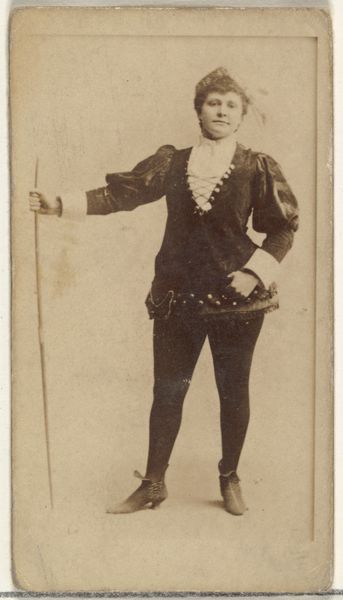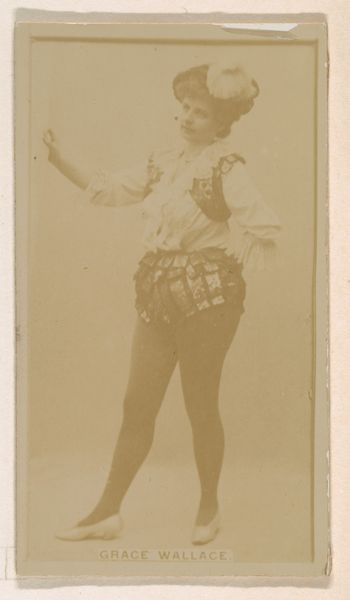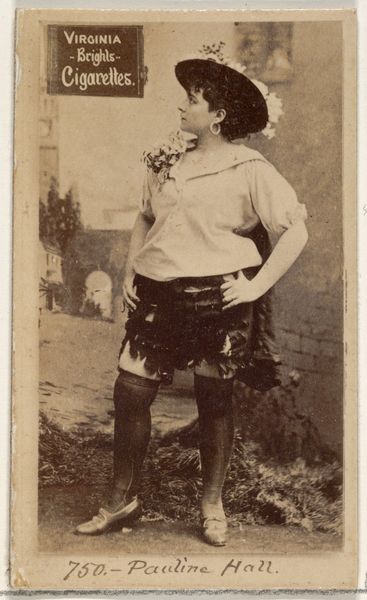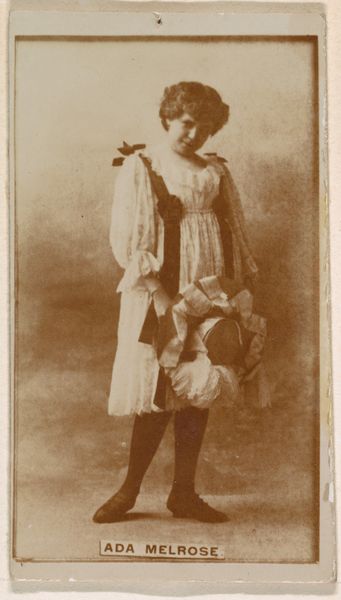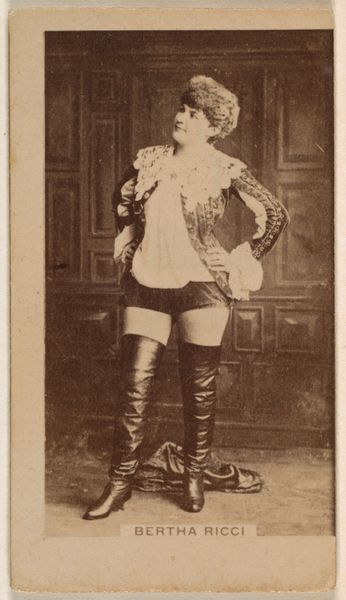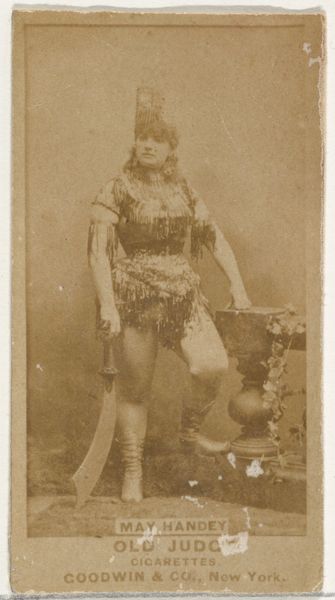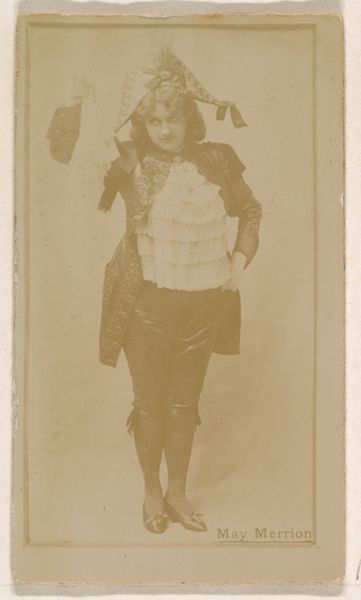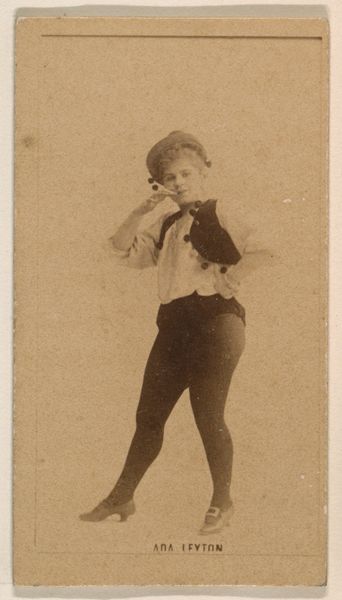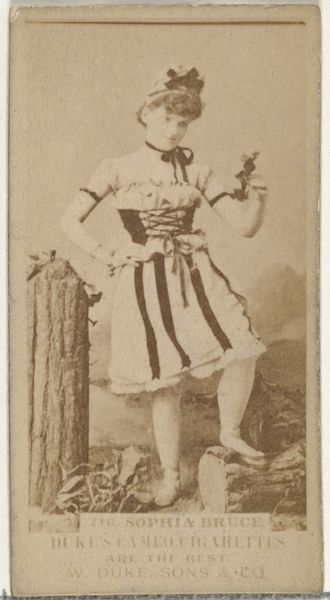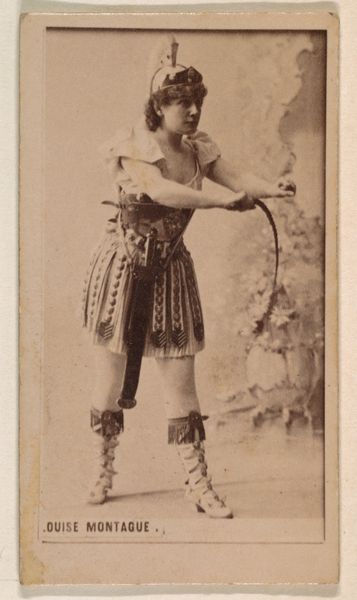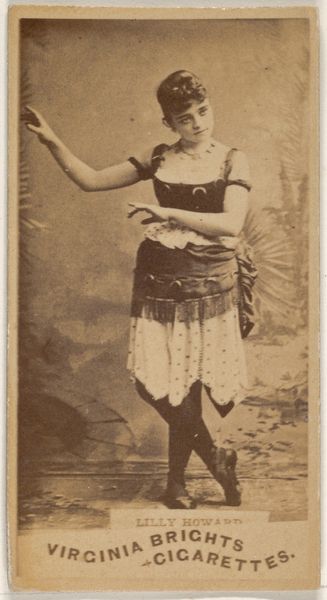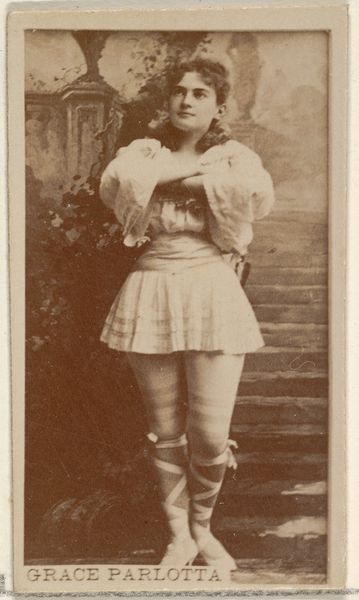
Frankie Raymond, from the Actresses series (N245) issued by Kinney Brothers to promote Sweet Caporal Cigarettes 1890
0:00
0:00
drawing, print, photography, albumen-print
#
portrait
#
drawing
# print
#
charcoal drawing
#
figuration
#
photography
#
albumen-print
Dimensions: Sheet: 2 1/2 × 1 7/16 in. (6.4 × 3.7 cm)
Copyright: Public Domain
Curator: Here we have an albumen print from 1890, part of the "Actresses" series (N245) by the Kinney Brothers Tobacco Company. The sitter is Frankie Raymond, presumably an actress of the time, used to promote Sweet Caporal Cigarettes. Editor: She certainly seems like a character. The elaborate costume, the confident smirk... I immediately sense a playful, almost mischievous energy emanating from her pose. The way she holds the prop gives an insight into her personality. Curator: The print itself, part of a larger set distributed with cigarettes, speaks volumes about the commodification of celebrity and femininity in the late 19th century. Tobacco companies frequently used images of actresses and other prominent women to market their products. This also offers insight into the rising celebrity of stage actresses during that era and what would become early mass media. Editor: It is fascinating how such a small card becomes this vessel of iconography, isn't it? Beyond advertising, her outfit feels significant. It’s not simply a costume but a visual shorthand. Those tassels feel very important! Curator: Yes, the visual identity helped promote the theatre industry but also influenced gender roles, aspirations, and consumption patterns among its viewers. Think about it—a collectible card included with something as ubiquitous as cigarettes... its a way to gain public consciousness through marketing and imagery. Editor: Absolutely. The symbolic value extends to the very medium. Photography was still a fairly new technology at this point, and a carefully struck pose of an actress had an effect of authenticity. Curator: Indeed, mass reproduction shaped perceptions and constructed narratives about class, celebrity, and consumer culture, solidifying norms in society, as popular representations so often do. Editor: The cultural context you describe adds layers of complexity to this piece, as a document from a bygone era. I walk away considering the ever-evolving relationship between public figures and commerce. Curator: For me, it reveals the history of commodifying cultural values as it intersects with women in media through commerce. Thank you.
Comments
No comments
Be the first to comment and join the conversation on the ultimate creative platform.
